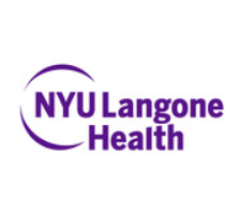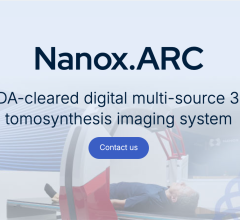
Jeanne-Marie Phillips, president of HealthFlash Marketing Communications www.healthflashmarketing.com.
Imaging forecast: Clouds ahead, followed by sunny skies for technology savvy pioneers.
Using cloud computing platforms for exchanging and storing medical images and data is the latest trend healthcare IT.
Several of these formats provide data access to radiologists, referring physicians and patients — anytime and anywhere. The benefits are numerous, but there are drawbacks too. Yet, these days, everyone seems to have their heads in the clouds.
But has cloud-based technology settled in for the long term or will it blow over quickly as yet another passing trend? Our experts weigh in on the weather ahead.
How exactly do you define the cloud?
Shina: We define cloud as access to virtually unlimited, always available computing resources (storage, processing, etc.) on demand. It is only available from a select few cloud infrastructure providers, such as Amazon. Cloud is not the same as a vendor-hosted data center.
Tabatabaie: The cloud provides access to an elastic, ever-expanding, amount of resources for computing and storage. It represents a phenomenal common denominator for connecting diverse data from diverse settings. It is ubiquitous regardless of geography, and is a way to increase quality while decreasing costs.
Reicher: The cloud is hosted applications or services delivered over the Internet. Customer purchase on a per-use basis much like phone or electric service.
Heere: Cloud computing has as many definitions as there are companies using the term, but basically should incorporate the following attributes: reliable anytime, anywhere access to IT resources and information by authorized users. [With an] iPhone PACS application, you can have real-time access to exams on a plane at 30,000 feet. Scaling of client resources optimizes client performance requirements.
What type of cloud technology does your company offer?
Shina: Shina 3Di uses cloud computing to deliver medical images and advanced (3D/4D) visualization and analysis tools to any Internet PC. Shina 3Di is a zero upfront cost alternative to PACS, 3D image processing and image exchange technologies.
Tabatabaie: lifeIMAGE is a cloud-based image sharing network that lets healthcare institutions, physicians, and patients securely share diagnostic imaging information. We use cloud technology to share, access and aggregate images and reports from anywhere.
Reicher: eMix, which stands for Electronic Medical Information Exchange, is designed to enable secure sharing of images and reports between disparate institutions and physicians via the Internet.
Heere: CoActiv has always offered cloud-based medical image and related image-data storage through our Vendor Neutral EXAM-VAULT Quad-Redundant Archiving, which provides secure redundant storage in four geographically distinct locations.
What are the benefits and drawbacks to customers of using a cloud environment?
Shina: Thanks to the cloud, we can offer many benefits to customers: zero upfront cost; unlimited scalability; and 100 percent availability (no downtime).
Tabatabaie: The primary benefit of using cloud technology for image sharing is that connectivity is made possible by the cloud, which can reduce ordering repeat exams. This saves time, money, and limits patient radiation exposure.
Another advantage is that it allows for a modular approach to building connections, for example, hospitals to physicians and physicians to patients, and so on.
Reicher: It has previously been difficult, labor intensive, and costly for institutions, patients and physicians to electronically share medical images and reports.
Amid a hodgepodge of proprietary systems by different vendors, systems often couldn’t talk to each other, despite wide use of the well-established DICOM standard. There was no good way for facilities to get images and reports to patients other than the time-consuming, more costly process of burning a CD or giving them films and printed documents.
Customers of cloud applications and services do not need sophisticated IT support to receive image and report files via a cloud-based service. For example, some medical institutions using eMix do not even have picture archiving and communication systems (PACS), the standard technology for viewing, storing, and distributing digital imaging data.
Patients can also download their imaging exams via eMix for storage in their personal health records or to show to a new physician.
Heere: For storage, users benefit from an economy of scale for archiving hardware and maintenance costs.
They also enjoy significantly enhanced communications abilities because they can grant appropriate users access to these images on the fly — without making a connection to a hospital VPN.
How has a cloud environment shaped your pricing model?
Shina: We can offer a zero upfront cost, an unlimited license for users and workstations, and there is no commitment with this competitive pay-per-use model. These are all great benefits of the cloud.
PACS and advanced (3D/4D) visualization technologies in contrast typically require a substantial upfront capital outlay, for example, for server equipment, and limit the customer to a certain number of “seats” or concurrent users. Lease arrangements may alleviate upfront capital costs, but require a multi-year cost commitment.
Tabatabaie: The cloud lets us truly be a service. Our customers pay for as much of the service as they need, without the need for the expensive infrastructure to support it.
Reicher: To use the service, institutions simply choose between two options: pay-per-use, or a monthly or yearly fee based on anticipated usage.
Charges are assessed on the upload side — that is, the facility where the image files reside. There are no charges to download the uploaded files. Initial monitoring of eMix usage indicates that the average size of an uploaded imaging file is 25 megabytes. So a tiered pricing model was established to let customers have flexibility in paying only for the amount of data they upload. Institutions can reduce uploading fees even more by purchasing a monthly or yearly plan, based on anticipated usage.
Heere: It has enabled us to offer strict per-exam pricing. We now offer a one-time fee for lifetime storage on a per-exam basis — no matter how many times it is accessed. Our cloud-based PACS application pricing structure is flexible and is based on specific exam mixes by client; percentage of ECHO, mammography, CT, MRI, CR, etc.
What has been the customer reaction?
Shina: Customers love the risk-free approach. You literally can be up and running in minutes and at no cost to you. This is unheard of in the PACS and advanced (3D/4D) visualization markets.
Tabatabaie: Our customers, prospects and partners are motivated, and plan for diverse use cases for the application of the cloud in image sharing.
Reicher: Initial eMix implementations have been well received. Early anecdotal accounts have illustrated improved patient care by expediting the movement of patient exams that have eliminated redundant imaging exams and accelerated patient treatment. eMix is working smoothly with multiple varieties of PACS.
Heere: We were one of the first vendors to offer cloud-based storage and have been doing so for more than six years. Clients have always found this to be a great value and convenience. It has been one of our most popular offerings.
Many imaging sites that were already using a PACS from another vendor took advantage of our storage.



 November 29, 2025
November 29, 2025 









